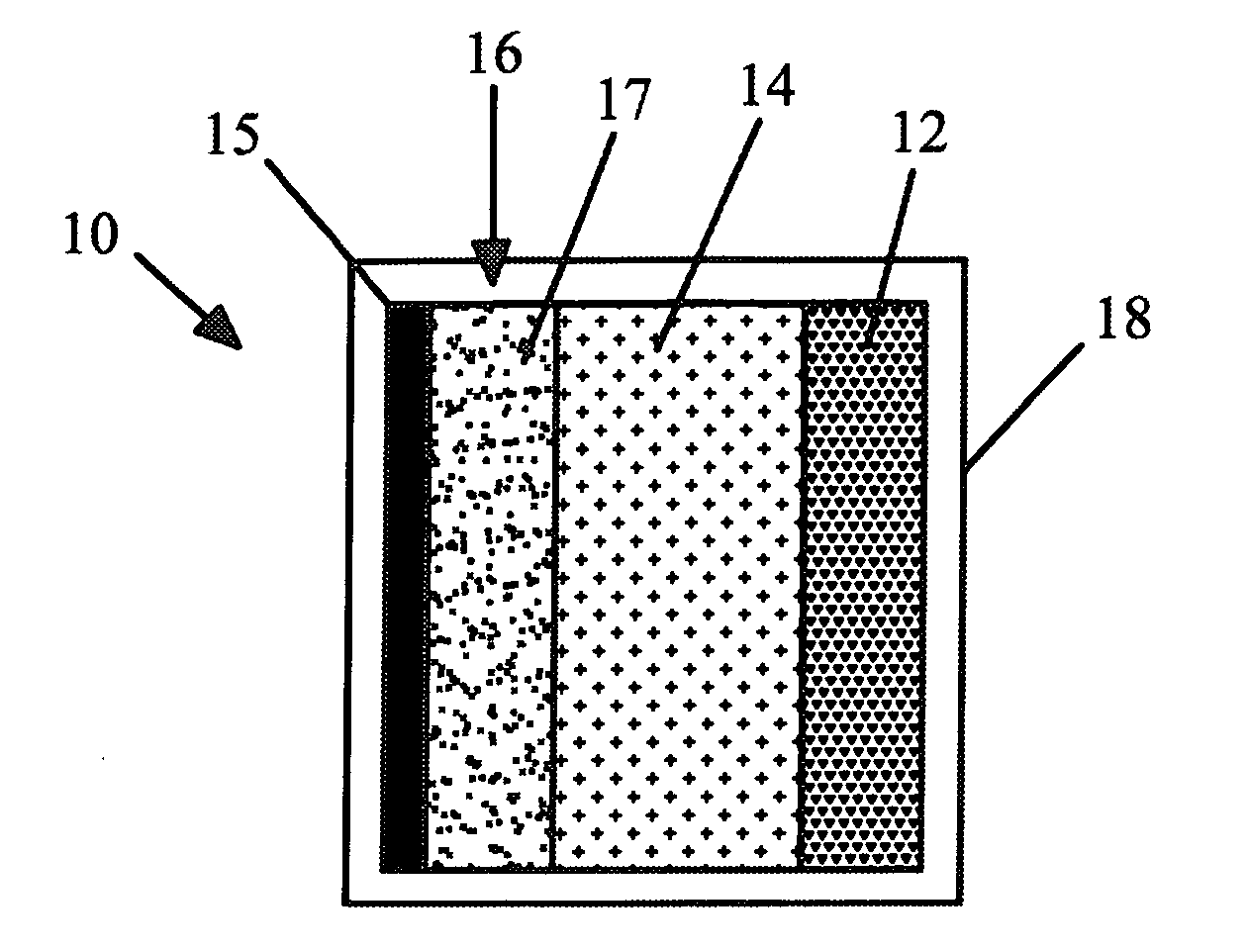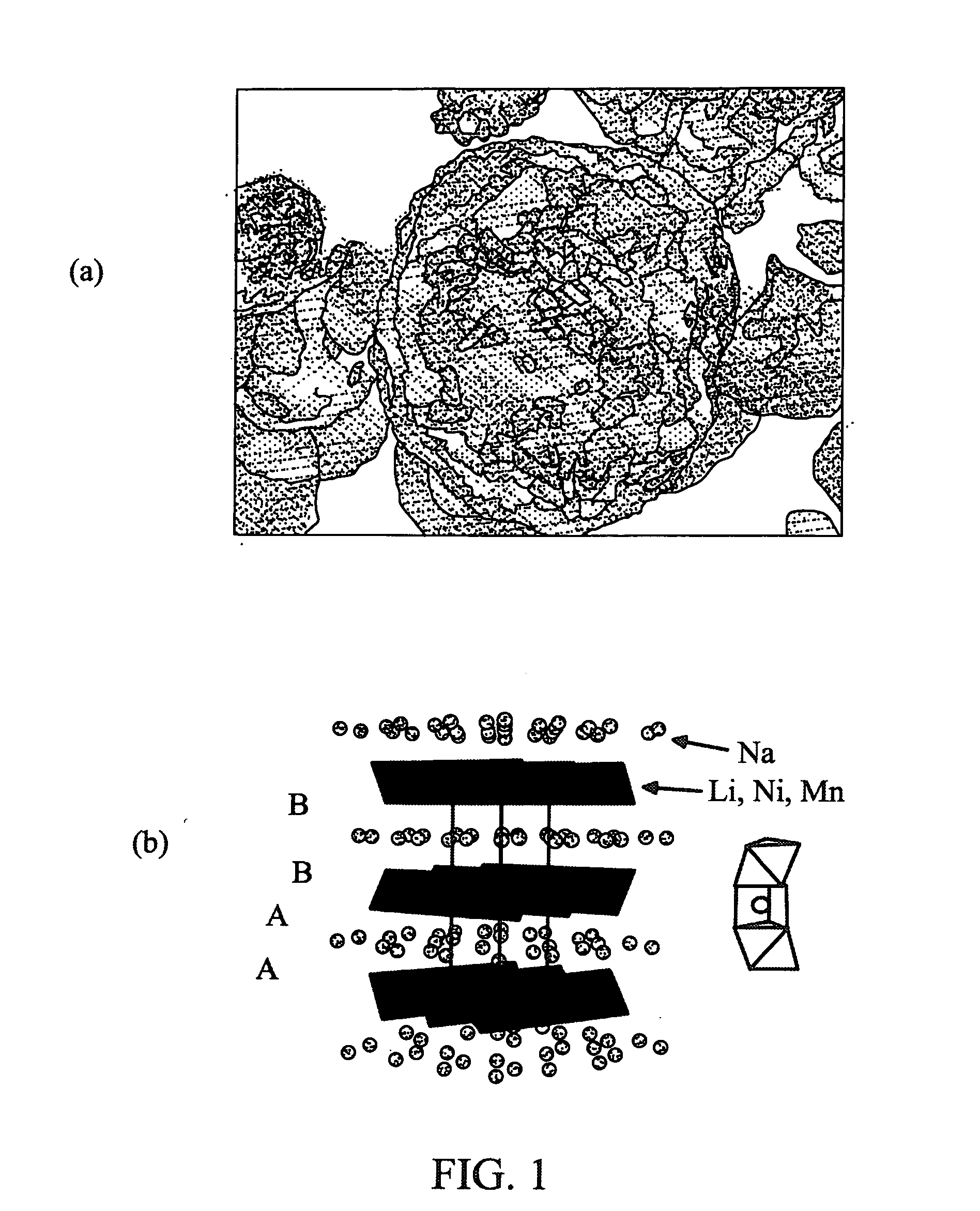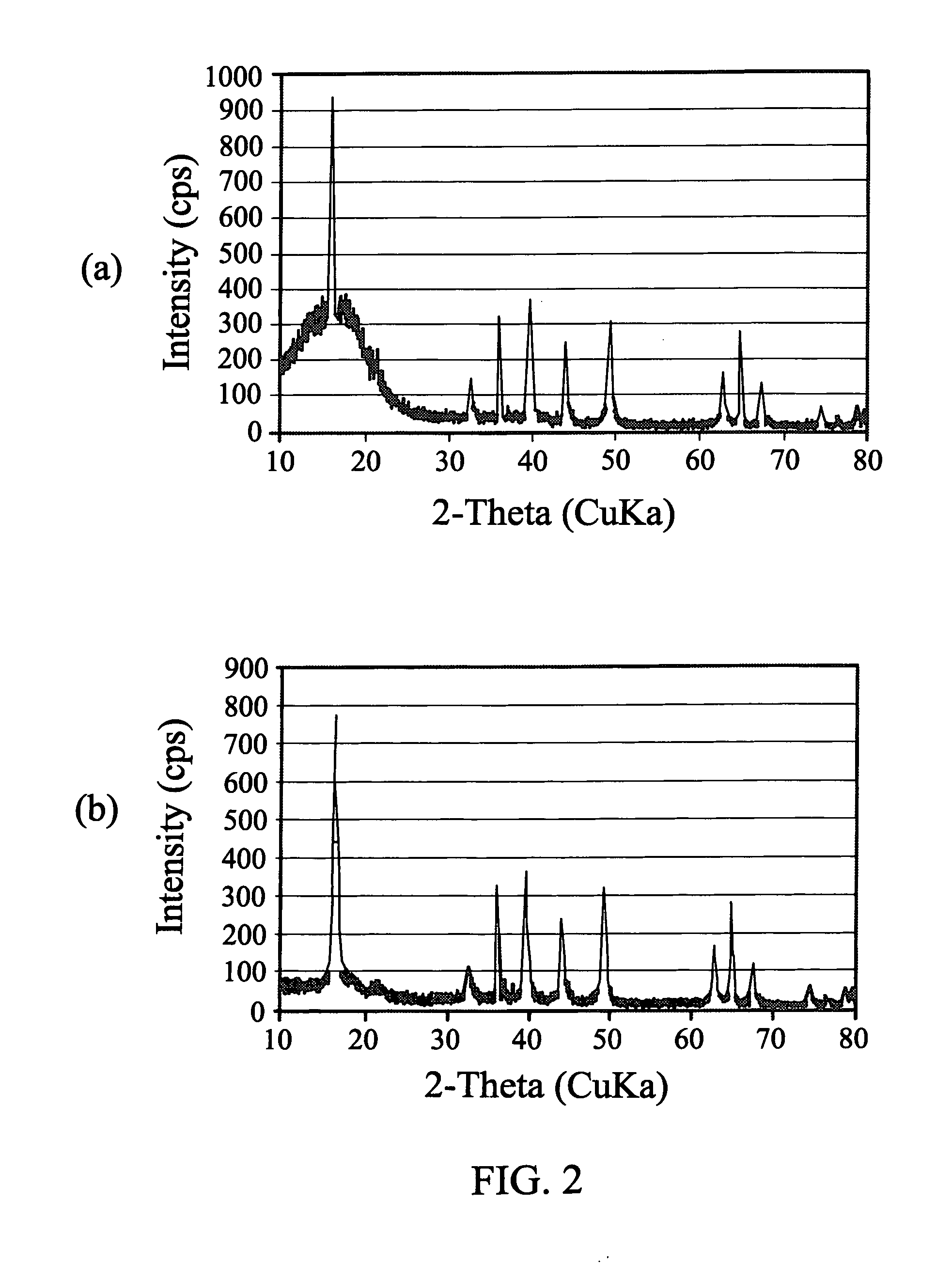Electrode materials for sodium batteries
a sodium battery and electrochemical technology, applied in the field of electrochemical materials for sodium batteries, can solve the problems of high-temperature batteries that need expensive thermal management engineered components, have merits and limitations, and have to have up-front capital and engineering costs, etc., to achieve the effect of low cost, high rate, and easy synthesizing
- Summary
- Abstract
- Description
- Claims
- Application Information
AI Technical Summary
Benefits of technology
Problems solved by technology
Method used
Image
Examples
example 1
[0039]An active layered phase Na1.0Li0.2Ni0.25Mn0.75Ob material was prepared by heating a mixture of about 1.37 g of Na2CO3, about 0.19 g of Li2CO3, and about 3.0 g of Ni0.25Mn0.75CO3. The carbonates were thoroughly mixed for about 16 hours on a rotation mixer and then ground with a mortar and pestle for about 30 minutes prior to heating. The resulting powder was placed into a box furnace, and then heated to about 500° C. over about 4 hours and held there for about 9 hours. The furnace was turned off and the sample was allowed to cool to room temperature in the furnace. The resulting product was then reground and returned to the furnace. The furnace was ramped to about 800° C. over about 2 hours, and held there for about 8 hours. The 800° C. firing was repeated, and the product was furnace-cooled in the off mode. Scanning Electron Micrographs (SEM) of the resulting powdered Na1.0Li0.2Ni0.25Mn0.75Ob were taken using a JEOL 7500 SEM instrument in the secondary electron imaging mode an...
example 2
[0041]Following the reaction protocol in Example 1, Na0.9Li0.3Ni0.25Mn0.75Od′ was prepared using the appropriate mole stoichiometries of Na2CO3, Li2CO3 and Ni0.25Mn0.75CO3. The sample XRD is provided in FIG. 2, panel (b).
example 3
[0042]The material synthesized in Example 1 was processed into electrode laminates. Each electrode laminate was made by casting a slurry of the Na1.0Li0.2Ni0.25Mn0.75Ob material onto an aluminum current collector sheet using a doctor blade. The slurry was composed of about 84 wt. % Na1.0Li0.2Ni0.25Mn0.75Ob material, 8 wt. % carbon, and 8 wt. % polyvinylidene difluoride (PVDF) binder in N-methyl-pyrrolidinone (NMP) solvent. The wet, cast electrode laminate was dried first at about 70 to 80° C. for about 1 to 4 hours in an air oven, and then in a vacuum oven at the same temperature overnight. The electrode laminate was then calendared, and electrodes of about 9 / 16 inches in diameter were punched out from the aluminum sheet and built into size 2032 coin cells (Hohsen). Each coin cell contained sodium as anode and an electrolyte mixture composed of propylene carbonate (PC) solvent containing 1 M NaClO4, with a Whatman GF glass filter paper separator. Cells were placed on a Maccor Series...
PUM
| Property | Measurement | Unit |
|---|---|---|
| temperatures | aaaaa | aaaaa |
| voltage | aaaaa | aaaaa |
| sizes | aaaaa | aaaaa |
Abstract
Description
Claims
Application Information
 Login to View More
Login to View More - R&D
- Intellectual Property
- Life Sciences
- Materials
- Tech Scout
- Unparalleled Data Quality
- Higher Quality Content
- 60% Fewer Hallucinations
Browse by: Latest US Patents, China's latest patents, Technical Efficacy Thesaurus, Application Domain, Technology Topic, Popular Technical Reports.
© 2025 PatSnap. All rights reserved.Legal|Privacy policy|Modern Slavery Act Transparency Statement|Sitemap|About US| Contact US: help@patsnap.com



